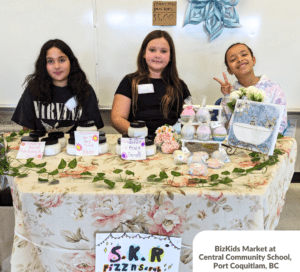It’s no big surprise that most kids love games. In fact, most adults do as well when we have time to play them (as experienced at a recent bachelor party that ended with a bunch of guys playing board games. Getting married after 40 is much different than in your 20’s lol)
So the question is this. Are we fully utilizing the power of gaming to inspire action in our kids?
The logic runs as follows.
Gaming:
– We all want to win the game
– To win, action must be taken
– Strategy must be determined, planned and executed on
– Winning or losing can still be fun as it truly is the journey that is so exciting
Life:
– We all want to be happy in life, often achieved by working & achieving goals
– To reach our goals, action must be taken
– Developing a strategy can help us achieve more goals faster
– Ideally, achieving a goal or not, the happiness should be found in the journey
So, why not teach kids when they are young to gamify, well, everything? And for that matter, let’s encourage adults to “play the game” of life as well so we can demonstrate authentically how fun personal, professional and social development can be?!
Here’s an example of what I mean. Today we completed one of our Inventor’s Paradise camps and it was phenomenal! It’s set up to be a fun and innovative boot camp of learning how to see & solve problems in multiple ways and then take action to innovate and develop real, live prototypes. It’s so much fun to see what these young minds come up with!
Anyway, one of the modules is designed to get them seeing outside of their day to day bubble and out into the BIG world they live in to find solutions to remove or prevent plastic in the ocean, supporting charitable organizations doing great things to clean water or feed the homeless sustainably, as well as designing a community gathering place (pictured) where people of all ages can come together and form true community bonds.
**Quick side note – I was SO impressed with what the students did in this camp but this particular exercise was mind blowing! They did it in just a few hours as a team and everyone was only 8-12 years old! I get excited for the future of our world when I see things like this.



But back to Gamification and how to utilize it, one of our other lessons was designed to teach them to look at the details of what’s around them; literally. We designed a scavenger hunt and they decided they wanted to compete in teams. This scavenger hunt had items like, find someone who could use a hand and, if safe, help them; Find something that is broken and needs fixing; Find something that you could improve and make work better through innovation; And of course, find 3 pieces of garbage and pick it up.
WELL, they took this scavenger hunt and RAN with it, to the tune of massive bags of garbage collected. When there was some extra time at the end of class and the facilitators asked what they would like to do, they all said, “Can we go pick up more garbage?” Mission accomplished!
Although we are not able to be at each camp all the time, we always try to be there for graduation so we can meet the students and hear about their experiences throughout the camp. It’s also a great opportunity for us to speak with the parents and hear their stories of development they have noticed within their own children throughout the week.
One week I spoke with a mother of a student who took our Lemonade Stand Challenge. Her son was somewhat easily distracted during lessons and often gave answers that were silly when asked questions. He is a lovely young man but a little hard to keep engaged at times. What was fascinating to watch, however, was once the Lemonade Stand Challenge begun, he was FOCUSED! I couldn’t believe the change in his demeanor and how serious and on top of things he became. No silly words; no going off topic or wandering off. He wanted to sell and he wanted to win the challenge!
When I spoke with his mother I told her how impressed I was with his performance during the Lemonade Stand and that competition really seemed to drive him. She laughed and said, “Oh Yes! I learned that a while ago.” In fact, she uses it. To get him to clean his room. Rather than saying, “can you clean you room?”, she says, “I bet you can’t clean your room in 15 minutes”. His competitive nature engages and his room is clean within 15min!
I get it, I’m sure many of you are saying, my kid would never fall for that. Well, perhaps, but all kids engage in different ways and have different triggers and that is the point. Gaming is a common thread among all of us but the types of games we like to play are different. Our kids didn’t come with instruction manuals, unfortunately, but through trial and error and engagement, we can figure out what get’s them going.
Schools are also noticing gaming as a trend and now do math problems on iPads for points. My son’s teacher last year even introduce a monetary economy of “money” for completing things that cashed in for pencils or stickers, etc.
Of course, what we really want is for them to WANT to make their bed and WANT to clean their room but we actually force anyone to love something that isn’t fun. In fact, we as adults don’t even enjoy many of the tasks that we do on a daily basis which is why gaming as adults can make mundane tasks fun and feel purposeful again!
Here’s an example of game boards I have made for myself over the years. (pictured below) What I did was take a magnetic whiteboard and divided it into 3 categories of “Adulting” Tasks (things that need to get done like laundry, cleaning the bathroom, etc), Physical & Mental Health (going to the gym, meditating, eating well, going to bed on time, etc), and Personal & Academic Learning and Development (reading, learning a new skill, writing, puzzles, etc).
Over time I kept adjusting the board depending on what was working and what wasn’t and modified the points accordingly. If something was REALLY hard for me to “want” to do but was really critical that I get it done, then I would give it more points to make it more enticing. Each day I had a goal for points that I had to hit. If I was above that threshold, I was moving life and myself forward. If below, I was falling behind. It helped me with gaining perspective on my life goals and ensuring I made time for the things I enjoyed doing, as well as getting the stuff done that needed to get done quickly and with less resentment.
It also totally got me doing WAY more of the things that I would often procrastinate on such as learning skills that I always wanted to learn. On my board I would get 3pts if I spent 5min working on a goal learning something I always wanted to learn. During this time I learned how to do the 3×3, 4×4 and 5×5 Rubix cube, how to juggle and many other little things that I always wanted to learn. As I would add points to my board each day, I would find myself feeling excited about my progress that was starting to feel so simple. I would end up looking for other things I could do, but wouldn’t normally, just to get more points. Laundry needs folding? Sure! I can fold the one load that is done and get 3 more points. No prob!
Going to the gym? Perfect! I would get points only for the actual sets I would complete, so, doing that one extra set became easily encouraged knowing I would really be excelling that day.
As it progressed, and only as it progressed, I started to introduce negative points when I would do behaviour I was trying to quit such as binge watching TV or being on Facebook to long. To track my progress, I had magnets that I would place next to each item I accomplished for the day and then reset at the start of the next. It was so much fun and got me into some really critical habits. I used this board for about 2 years.


Back to the kids. So, while the list below is only a fraction of ideas you can try with your kids, or even yourself, it might be a great start. I have used many of them myself, some that work and some that didn’t. It’s important to note that not every game needs to have a prize, although sometimes that can help. Just remember, prizes can be something intangible like, they can choose dinner or the movie that day, or they get to sleep with the puppy tonight, extra iPad time, or other things they enjoy but perhaps don’t always get to do.
- A Game Board of Points and Progress – Get a white board and list the goals for each day with a point value next to them. Perhaps, making their bed, making breakfast, reading for 15min, creating a craft or building something unique in Lego, and so on. If your goal is to get them off their iPad, list things with them that they have always wanted to learn how to do, like playing a guitar or skateboarding at the park on the list. Mix in daily chores and reminder of what they need to do each day. List points and then a prize column. 25 points might get them tickets to the movies, 50pts might “buy” them new runners or sunglasses, etc.
- Dice! – Dice can be used in so many ways! Roll a 6 and mom or dad will do one chore on your list for you. Otherwise, it’s up to them to get what’s done on their daily chore list. Or have a list of what each dice number represents. 3 Means an outdoor activity, 5 means they can choose the movie, or whatever their incentives are. As long as they get their chores done, they get what’s on the dice.
- Race Them! Set up challenges where you race them to complete your daily chore list. Maybe they have to match all the socks while you fold the laundry to see who wins! Maybe they have to clean their room while you clean the kitchen. Who will win!?
- Basketball! – Yes, it will take longer, but tossing items that need to be washed into a basketball hoop hamper or toys into a bin can spice it up quickly.
How about you? How have you been able to add gaming into your child’s world to get them excited to learn or complete tasks?
Happy Gaming!




